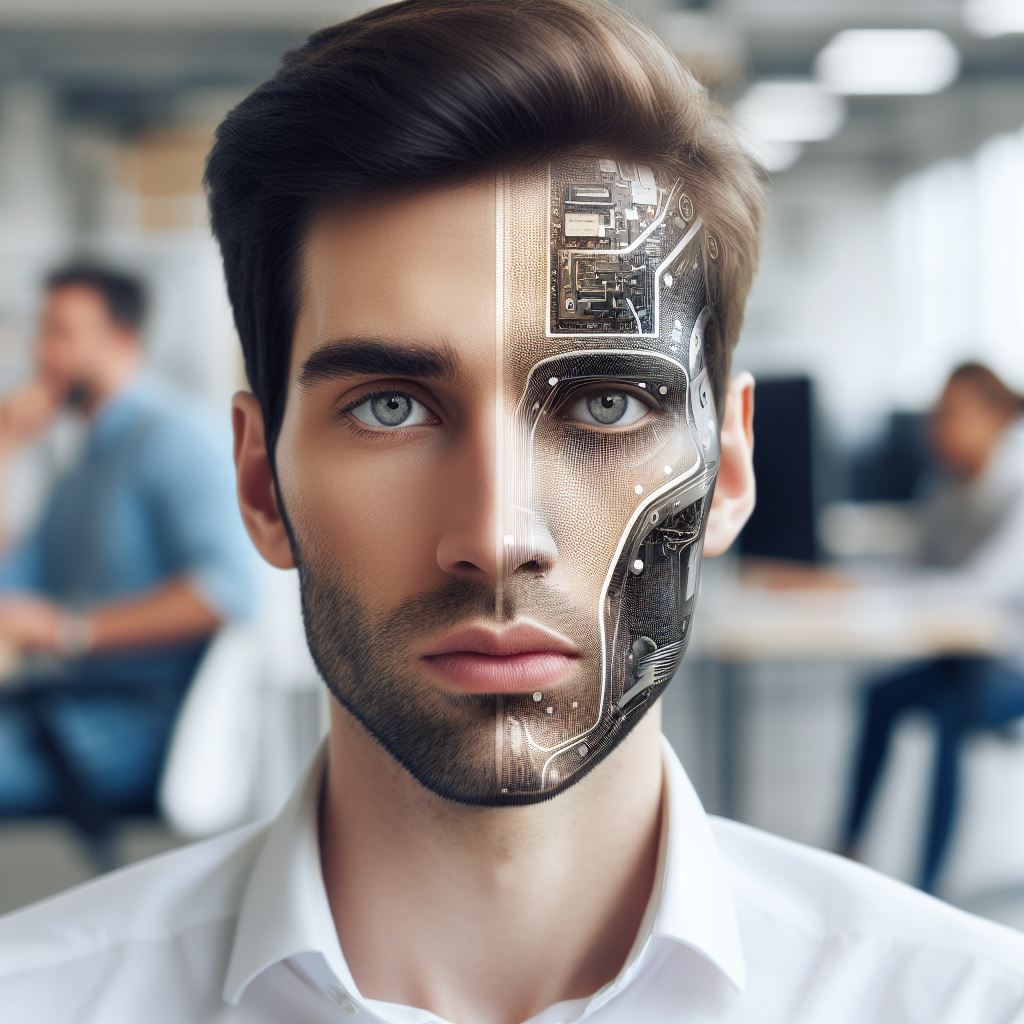Understanding AI Bias: A Guide for Coders and Developers
Last Updated on October 6, 2023
Introduction
AI bias refers to the unfair or prejudiced behavior exhibited by artificial intelligence systems.
Understanding AI bias is crucial for coders and developers to ensure fairness and avoid potential harm.
This blog post aims to provide a comprehensive guide on AI bias to educate and guide programmers.
By exploring AI bias, coders can contribute to developing unbiased and ethically responsible AI systems.
Understanding AI Bias
Explanation of AI bias
AI bias refers to the unfair or prejudiced behavior exhibited by artificial intelligence systems. Bias can occur in various forms, such as favoring certain groups or discriminating against others.
AI bias can have serious consequences, perpetuating existing inequalities and reinforcing societal biases.
For example, facial recognition systems may have higher error rates for people with darker skin tones.
Reasons for AI bias
AI bias can arise due to several factors, which need to be addressed to mitigate its impact.
Firstly, lack of diverse data can lead to biased AI outcomes. If the training data only represents a specific group, the AI system may make inaccurate predictions or decisions for other groups.
Secondly, bias in the training data itself can perpetuate existing prejudices. If historical data contains discriminatory patterns, AI systems can learn and reproduce those biases, amplifying the unfairness.
Thirdly, biased algorithms can contribute to AI bias. These algorithms may inadvertently incorporate discriminatory rules or favor certain groups, leading to biased results.
It’s crucial to carefully design and evaluate algorithms to minimize such biases.
Lastly, human bias in the development process can introduce AI bias. Developers may hold their own biases, consciously or unconsciously, which can influence the design and implementation of AI systems.
It is essential to have diverse teams and ethical guidelines to reduce this potential bias.
To combat AI bias
To combat AI bias, it is important to implement various strategies, such as:
- Collecting diverse and representative data to train AI systems.
- Regularly assessing the training data for potential biases and removing or mitigating them.
- Auditing and testing algorithms to detect and minimize bias in their decision-making processes.
- Promoting diversity and inclusion within development teams to mitigate human bias.
Furthermore, transparency and accountability are crucial in addressing AI bias.
Organizations should establish clear guidelines and policies regarding AI development and deployment to ensure fairness and non-discrimination.
In essence, AI bias can have significant implications, perpetuating inequalities and reinforcing biases.
Understanding the various factors contributing to AI bias is essential for developers and coders in order to create fair and unbiased AI systems.
By implementing proactive measures and promoting diversity, we can strive towards developing AI technologies that are truly unbiased and inclusive.
Read: Essential SEO Practices When Coding a Website
Impact of AI Bias
Consequences of biased AI systems
AI bias has far-reaching consequences that can exacerbate societal biases and perpetuate discrimination.
Biased AI systems can reinforce existing prejudices and contribute to unfair decision-making processes, ultimately leading to negative outcomes for marginalized communities.
One of the significant consequences of biased AI systems is their potential to perpetuate societal biases.
By relying on biased data or algorithms, AI systems can inadvertently incorporate and reinforce existing prejudices.
For instance, if a facial recognition system is trained primarily on Caucasian faces, it may have difficulty accurately identifying individuals from other racial backgrounds, leading to potential misidentifications and harm.
Moreover, biased AI systems can lead to discrimination and unfair decision-making.
When AI algorithms learn from biased datasets or biased programming, they may unintentionally discriminate against certain individuals or groups, perpetuating existing inequalities.
For example, if an AI system is used to automate the hiring process but relies on biased historical employment data, it may end up favoring one gender or race, leading to discriminatory outcomes in hiring decisions.
The negative impact of AI bias is particularly significant for marginalized communities.
Biased AI technologies can further marginalize these communities, perpetuating their disadvantage and limiting their access to opportunities and resources.
For instance, if an AI algorithm used to allocate public resources is biased, it may disproportionately disadvantage marginalized communities, exacerbating existing disparities.
Examples of high-profile cases highlighting AI bias
There have been high-profile cases that have shed light on the issue of AI bias in recent years. Facial recognition technology, for instance, has received significant attention due to its racial bias.
Studies have demonstrated that facial recognition algorithms tend to be less accurate in identifying individuals with darker skin tones, leading to potential misidentifications and targeting of innocent people.
This racial bias in facial recognition technology has raised concerns about its use in surveillance and law enforcement.
Another prominent example of AI bias is seen in hiring and employment practices.
Algorithms used in recruitment processes have been found to favor certain groups and discriminate against others, leading to biased hiring decisions.
This perpetuates existing inequalities in the job market and limits opportunities for underrepresented groups.
Addressing AI bias is crucial to ensure fair and equitable outcomes in the development and deployment of AI technologies.
It requires efforts from coders and developers to carefully consider the datasets used, test for biases, and continuously monitor and update the algorithms to minimize any potential biases.
In fact, the impact of AI bias is significant and can have far-reaching consequences.
Biased AI systems risk reinforcing societal biases, discriminating against individuals, and negatively affecting marginalized communities.
Prominent cases, such as racial bias in facial recognition technology and algorithmic bias in hiring practices, highlight the urgent need to address and mitigate AI bias.
By understanding these consequences and learning from notable examples, coders and developers can play a vital role in creating a more unbiased and equitable AI landscape.
Read: A Day in the Life of a Hospital Medical Coder

Identifying AI Bias
Challenges in detecting AI bias
Identifying bias in AI systems can pose various challenges, primarily due to the lack of transparency.
These systems often function as black boxes, making it difficult for coders and developers to understand how decisions are being made. Consequently, detecting bias becomes a daunting task.
Furthermore, the complexity of AI algorithms adds to the challenge.
In many cases, coders may be familiar with the high-level functioning of an algorithm, but the intricate intricacies within these algorithms may introduce bias.
Black-box models, specifically, are known for their intricate nature, making it even harder to pinpoint the source of bias.
Strategies for identifying AI bias
Despite the challenges, there are various strategies that coders and developers can employ to identify AI bias and address it effectively.
Data exploration and preprocessing techniques
By thoroughly exploring and preprocessing the data used to train AI systems, coders can gain insights into potential bias.
This involves analyzing dataset demographics, understanding potential biases in data collection methods, and addressing any imbalances or disparities.
Evaluating algorithmic fairness and interpretability
Evaluating algorithmic fairness helps uncover bias in the decision-making processes of AI systems.
Coders should assess whether protected attributes such as race, gender, or age influence the outcomes of the algorithms.
Additionally, ensuring interpretability of the models enables a better understanding of how decisions are being made, making it easier to identify bias.
Conducting regular bias audits
Regularly auditing AI systems for bias is crucial in maintaining fairness and addressing any emerging biases promptly.
This involves monitoring system outputs and outcomes, evaluating the impact on different demographics, and taking corrective actions if bias is detected.
It is important to note that while these strategies can help identify bias, they are not foolproof. AI bias is a complex issue that requires ongoing vigilance and a commitment to address bias as it arises.
Continuous monitoring and improvement are essential to ensure fairness and accountability in AI systems.
Overall, by understanding the challenges associated with detecting AI bias and implementing appropriate strategies, coders and developers can play a crucial role in mitigating bias and creating AI systems that are fair and reliable.
Read: DRG Codes: How They Impact Hospital Reimbursements
Mitigating and Preventing AI Bias
In order to address the issue of AI bias, developers and coders can implement several techniques and ethical considerations to mitigate and prevent bias in their AI systems.
Techniques for mitigating AI bias
- Diversity in data collection and representation: By ensuring that the training data used for AI systems is diverse and representative, developers can reduce the risk of bias.
- Algorithmic adjustments and regularization: Developers can modify algorithms and introduce regularization techniques to minimize bias and ensure fair and balanced predictions.
- Continuous monitoring and testing: Regularly monitoring and testing AI systems can help identify and rectify any biased behavior or outcomes.
Ethical considerations for developers in preventing AI bias
- Inclusive and diverse development teams: Building teams with diverse backgrounds and perspectives can bring a wider range of viewpoints and help identify potential biases in AI systems.
- Bias impact assessments and user feedback: Conducting thorough impact assessments and seeking user feedback can shed light on any unintended biases or discriminatory effects of AI systems.
- Ongoing education and awareness: Developers should continuously educate themselves and stay updated on ethical guidelines and best practices to ensure they are aware of potential biases and how to prevent them.
By implementing these techniques and ethical considerations, developers can actively work towards mitigating and preventing AI bias.
However, it is important to note that eliminating bias entirely may be challenging due to the inherent limitations of AI systems.
Developers should also be aware of the potential risks associated with bias, including negative impacts on marginalized communities, reinforced stereotypes, and unfair decision-making.
Taking a proactive approach in addressing bias can help create more equitable and inclusive AI systems.
Furthermore, it is crucial for developers to collaborate with experts from various fields, including ethicists and social scientists, to gain a deeper understanding of the potential biases and ethical implications of AI technologies.
In short, mitigating and preventing AI bias requires a multi-faceted approach that incorporates diverse data collection, algorithmic adjustments, continuous monitoring, inclusive development practices, bias impact assessments, ongoing education, and awareness.
By actively addressing bias, developers can contribute to the development of AI systems that are fair, transparent, and respectful of human values.
Read: Is Whiteboard Coding Dead? Alternatives in Tests
Conclusion
Summary of key points discussed
Throughout this guide, we have explored the crucial topic of AI bias and its implications for coders and developers.
We learned that AI systems can inherit and perpetuate biases present in the data they train on. We also discussed the impact of bias in AI technology on marginalized communities and society as a whole.
Importance of addressing AI bias for responsible tech development
Understanding and addressing AI bias is not just an ethical imperative but also a necessary step towards responsible tech development.
By allowing biased AI systems to impact decision-making processes, we risk disadvantaging and perpetuating inequalities among already marginalized groups, leading to dire consequences.
Call to action for coders and developers to prioritize fairness and inclusivity in AI systems
As coders and developers, we have a responsibility to ensure fairness and inclusivity in AI systems.
By actively identifying and mitigating bias, we can build AI technology that promotes equality, breaks down prejudiced barriers, and empowers all individuals to benefit equally from advancements in this field.
AI bias is a pressing issue that demands our attention. By understanding and addressing bias, we can create AI systems that serve the best interests of everyone.
Let’s commit to prioritizing fairness and inclusivity in our work to make AI a force for positive change in the world.


